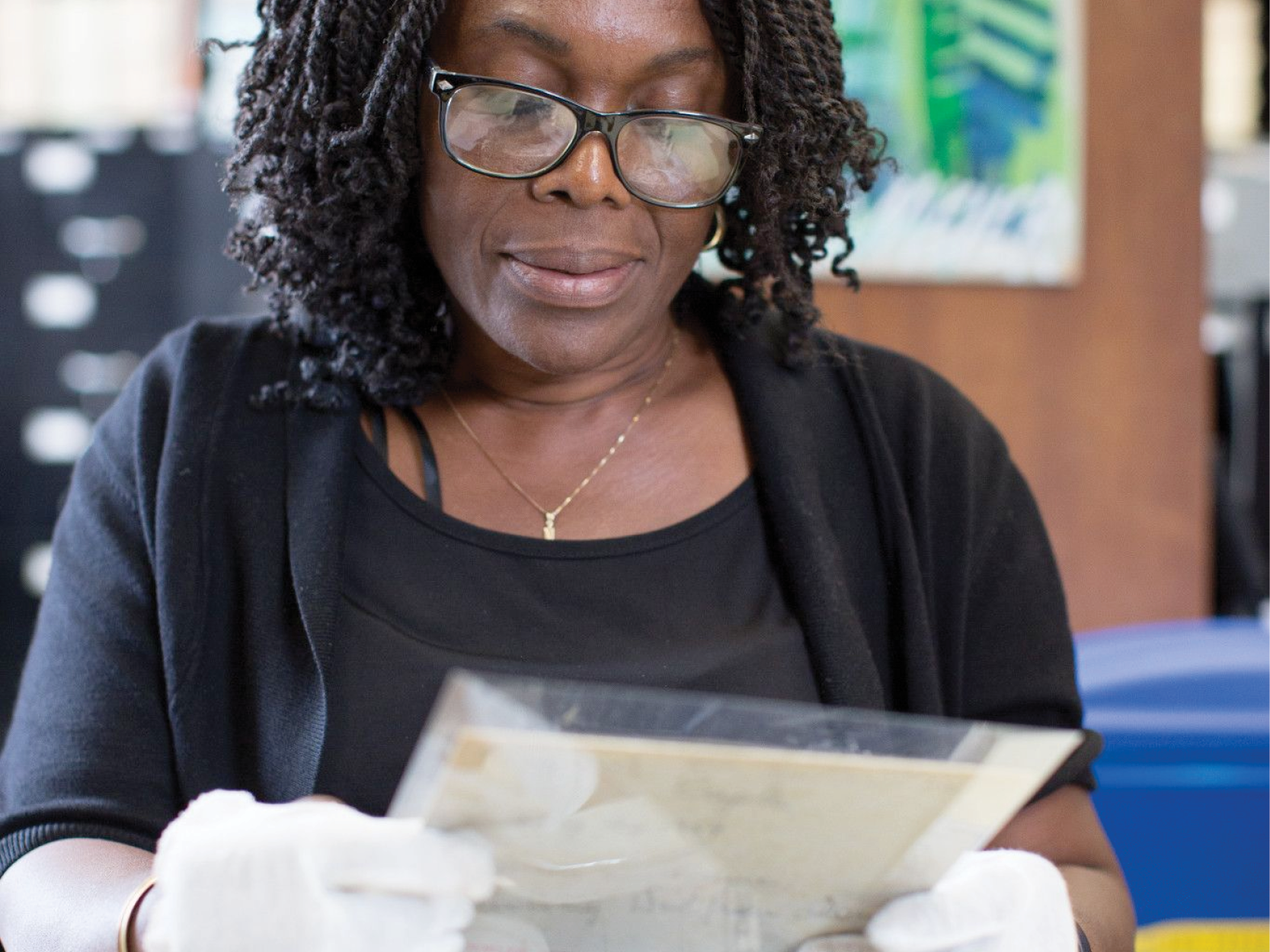Brooklyn Connections is the education outreach program in the Brooklyn Collection. It focuses on cultivating 21st Century learning skills in students and supporting teachers on the incorporation of archives materials into curricula. This blog post is part of a series from the Brooklyn Connections team, sharing skills and ideas for using archives primary source material in the classroom. Using primary sources in the classroom shows us that we can access history through many different formats as long as we are grounded in historical thinking.
The Brooklyn Connections team loves engaging with teachers for regular Professional Learning events, and our recent workshop at Plymouth Church gave us an opportunity to learn about the role that this institution played in Abolition and Civil War-era Brooklyn. While exploring the Brooklyn Collection for primary sources that we could share, we were excited to find political cartoons about our subject. We wanted to share some of our ideas on how students can learn to work with political cartoons. We think that using political cartoons in the classroom is an engaging and exciting starting point that shifts away from textbooks and classroom lectures while still scaffolding the same historical information.
Basic Skills for Reading Political Cartoons
Doing research with political cartoons exercises the same skills that we use for other primary sources. The best place to start is by making observations and inferences. We’ve outlined some basic strategies for teaching observation and inference skills in a previous blog post. To summarize: after discussing with students how observations are the things that we see, and inferences are the ideas we have based on what we see, invite students to make observations and inferences while clearly understanding and articulating whether they’re making an observation or inference. Students should connect the two, making sure that all their inferences are rooted in observations.
When we look at political cartoons, it’s a great idea to start with basic observations and inferences. You can use a basic worksheet for this; we have one that we like to use (download it here), and the Library of Congress has a great analysis tool that we modelled ours on.
Following this, we can provide students with more context about political cartoons. Engage students in a conversation about some of the key concepts political cartoons often employ:
- satire, which is a type of humor that exposes and makes fun of other people
- exaggerated features of individuals or groups
- bias which demonstrates a specific perspective
- symbols may be used to refer to people, places and events
After students have a good grasp of these elements, you can prompt them towards further observations with some additional questions:
- What symbols do you see?
- What words do you see, if any? What do you think they refer to?
- What features do you notice that are exaggerated in size?
We practiced this technique with a political cartoon of Henry Ward Beecher from Puck Magazine:
.jpg)
When we looked at this political cartoon, we noticed that Henry Ward Beecher’s body is exaggerated in size. We also noticed that there is food all over him; we discussed what this could symbolize. Finally, we noted the German text in the bottom left. While this was not something that we could immediately translate, we acknowledged that we’re able to gain valuable meaning from this primary source without understanding every element of it.
Reflect
Treating political cartoons the way we treat other primary sources – by starting with methodical analysis that follows steps for observation and inferences – demystifies this format and empowers students by showing them that they already have the basic skills for working with political cartoons.
Differentiation
- For lower level students, allow more time to observe and infer, provide less complex political cartoons, and spend more time discussing symbols found in the political cartoon.
- For higher level students, provide more complex political cartoons and ask for more inferences and questions.
- For more complex political cartoons, divide the class into small groups, cut the image into pieces, and distribute one piece to each small group of students. Invite the students to examine their piece as a group and share with the class the observations and inferences they have made. Finally, as a class, look at the entire image and see how all the pieces combine to make a whole image. This exercise will allow students to focus on details in a portion of an overwhelming image. It will also provide an opportunity for students to revise their inferences after gaining additional knowledge.
Outcomes and Assessment
Student work can be evaluated based on comprehension of basic observation and inference techniques, as well as the student’s grasp of concepts specific to political cartoons: satire, symbols, and exaggerated features. The teacher can collect student work to check for completion and comprehension. Students can also assess each other’s work during turn-and-talk segments.
This post is the sixth in an ongoing series. Read the other posts in the series: What's a Primary Source?, Observations and Inferences, Maps and Atlases, Using the Internet to Find Primary Sources Online, Asking Questions for Research, Notetaking Skills, and Citing Sources.
This blog post reflects the opinions of the author and does not necessarily represent the views of Brooklyn Public Library.
Great post. The title of the
Post a Comment
While BPL encourages an open forum, posts and comments are moderated by library staff. BPL reserves the right, within its sole discretion, not to post and to remove submissions or comments that are unlawful or violate this policy. While comments will not be edited by BPL personnel, a comment may be deleted if it violates our comment policy.
eNews Signup
Get the latest updates from BPL and be the first to know about new programs, author talks, exciting events and opportunities to support your local library.







